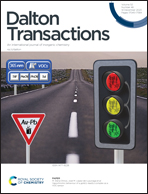Sustainable, low Ni-containing Mg-doped layered oxides as cathodes for sodium-ion batteries†
Abstract
The supply of battery-grade nickel to produce positive electrodes of sodium-ion batteries may soon become insufficient. For this reason, it is crucial to find new electrode materials that minimize its use or even fully remove this element from synthesis. We have prepared a Na0.67Mg0.05FexNiyMnzO2 (0 ≤ x ≤ 0.2; y = 0.05, 0.15; 0.6 ≤ z ≤ 0.9) series with low Ni and Fe contents by a single and easily scalable sol–gel method. This procedure yields high-purity and crystalline samples as evidenced by structural, morphological, and spectroscopic studies, including X-ray diffraction, electron microscopy, and X-ray photoelectron spectroscopy. The electrochemical tests showed an exceptional performance for the F0N05 sample with the lowest (Ni + Fe) contents, at 5 C (ca. 100 mA h g−1), and good capacity retention after 100 cycles. This excellent behaviour was also evidenced when cycling at −15 °C. These results were confirmed by electrochemical techniques, such as cyclic voltammetry and impedance spectroscopy, that evidenced a fast exchange of sodium ions due to a significant capacitive contribution and high apparent diffusion coefficients. Post-mortem analysis of the F0N05 electrodes by XRD showed the reversible insertion and the absence of detrimental P2–O2 and P2–P2′ transitions, while XPS spectra demonstrated the reversible redox activity of both transition metals and oxygen.



 Please wait while we load your content...
Please wait while we load your content...